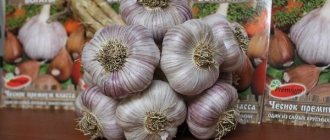Only in fairy tales do snowdrops bloom spontaneously in the depths of winter. Forcing tulips at home is a long process, preparation for which begins long before the first buds appear in January or March. Tulip bulbs, like other related crops, ensure growth and flowering in the warm season, and during the dormant period they retain nutrients for future vegetation in their juicy thickened scales. The bud buds are also formed in advance, and their quality largely depends on how the plant was cared for in the summer.
In order to get flowers beloved by many at a time unusual for nature, all over the world they began to use these features of tulips, as well as the possibility of growing them right in the apartment. Forcing tulips in a greenhouse by March 8 allows you to see bright corollas of all shades from the end of December until May.
Tulips description
In European languages, the name of the tulip flower came from the Ottoman-Persian dictionary. The word "tülbend" meant fabric for the national headdress. Later, this concept began to correspond not only to the material from which it was made, but also to the turban itself, which had an external resemblance to a flower. Probably, the borrowing occurred almost simultaneously in the countries of Eastern and Western Europe, therefore the Italian “tulipano”, the Polish “tulipan”, as well as the German “tulpe” and the Dutch “tulp”, which have lost the ending “an”, have a common root. The word tulip entered the Russian language as a free reading of the Polish name of the plant.
Latest articles for gardeners, gardeners and flower growers
Tomato seeds from Partner company tomato catalog with description
Tomato seeds of Siberian selection are the most productive
Tomato seeds are the most productive varieties for 2022 for the Moscow region
How to grow mushrooms at home: oyster mushrooms
Tulips come from the lily family. In addition to them, this family includes: lilies, muscari, hyacinths, fritillaria, etc. A characteristic feature of these flowers is the presence of six petals (hybrid varieties have more petals) and six stamens with elongated anthers. Most often, one plant produces one bud; in some species, several buds are possible on the stem.
The shape of the petals can be oval, semicircular, pointed with fringed or corrugated edges. Flower sizes can vary from small, just a few centimeters, to huge ones, about 20 cm.
The color palette is very diverse, it includes all existing paints, tones and halftones. Thanks to the painstaking work of breeders, new types of tulips appear every year.
Interesting to know, read: - How to plant and grow crocuses with further care.
The stem of the flower is erect, cylindrical in shape. Its height depends on the type and variety of flower: 10-20 cm or 60-100 cm.
Leaf plates of tulips are formed from 1-12 pieces; they are very important for the formation of the bulb for the next year. If they are lost during the growing season, the flower may die.
Tulips are bulbous flowers. The bulb is a bottom with scales, which are covered on top with protective scales, which perform a protective function. The life cycle of the bulb is about 24 months, after which it dies and forms daughter bulbs.
Comments (2)
Veronica
10/22/2017 at 06:30 |
When I was only growing tulips for the first year, I encountered such a problem as pale, colorless buds. After consulting with knowledgeable friends, I found out that it was too hot in my greenhouse and there was not enough sunlight.Answer
Yulia Expert Plodogorod
06/24/2019 at 23:21 |
Hello, Veronica! There are several other reasons that can lead to the described problems and loss of decorativeness of the buds.
First of all, sharp temperature fluctuations are unacceptable at all stages of cultivation. Such disasters can lead to many problems during further cultivation.
Deformed buds on short stems may occur if the bulbs have not been cooled properly.
Temperature is important not only after sprouts appear and flowers begin to actively develop, but also during rooting. The optimal temperature for the rooting process is 9-10 degrees. If the room is colder, this provokes the problem described - pale and unevenly colored buds.
Thin and inconspicuous petals may appear as a result of a lack of nutrients. Namely calcium. To prevent this from happening, we recommend watering the plant with calcium nitrate during the period of active growth. The procedure must be carried out at least 2 times. Concentration 1 tablespoon per ten-liter bucket.
Defects on foliage and petals are often caused by disease. Various fungal diseases usually develop due to excess humidity in the greenhouse. To avoid this, you need to install good ventilation in the room.
We would like to note that musty air and lack of normal ventilation can also cause the pale color of the buds. But if there is poor ventilation, this may not be the only problem. Flowers may even die, and in addition, such an environment promotes the development of diseases.
As for lighting, you are absolutely right; poorly lit plants produce weak peduncles and pale buds. We would like to note that when forcing any flowers you need to use phytolamps. Since the daylight hours at the end of winter and early spring are not long enough for heat-loving crops.
Answer
Bulb selection
Before you begin the process of forcing flowers, the bulbs must first be prepared. Preparation begins in the spring; tulips, the bulbs of which will later be used for forcing, have their buds cut off without allowing them to open, but leave as much of the stem with leaves as possible.
To force tulips by March 8, you need to choose exclusively large and heavy bulbs (from 25-30 grams, 4-5 cm in diameter), in other words, extra class. Only such bulbs will be able to please you with powerful spring flowering, because only strong and strong (i.e. large) planting material can cope with “forcing” in unnatural conditions.
Main features of our business
I will say right away that we started our business right away with large volumes - we grew a little over 40,000 tulips. To do this we had to install large greenhouses. If your initial appetites are smaller, then you won’t need a large starting capital. Please note that to force 2,000 bulbs you will have to build a greenhouse with an area of about 40 m2 - the territory of almost any household plot is quite suitable for this. A significant advantage of this is that to start running such a business you do not have to register it with the tax office. In our case, it all started on a large scale and we had to rent a large plot of land to conduct business, which we had to register.
However, I would like to immediately note that if a business is not registered, there is no possibility of selling goods to large commercial organizations. Actually, if your initial production volume is small, then this is not a problem at all.
Chat with friends: what to do after your salary to make you want to work more
How to become a good influencer and start making money online
Sting sold the rights to all his songs for $250 million
Varieties of tulips for forcing
Tulips are perennial ornamental plants that can be grown both at home and in industrial settings. There are many varieties of flowers - different in the shape of the inflorescence and their shade. When choosing varieties, pay attention to the color of the plants. Since tulips are intended more for spring holidays, those that are distinguished by bright shades - red, yellow, snow-white, lilac - are in great demand. Agricultural technology will not be different, but you will satisfy the needs of consumers!
To get blooming tulips by March 8, choose the following varieties:
- Parade. Bright red large tulip, in the shape of a glass. Height 12 cm. The middle is black, with a yellow border. Reveals under the sun. Flower height up to 70 cm.
- London. The color is blood red. Black color with yellow border. Stamens are black, anthers are brown. Wide goblet shape. The height of the bud is 9 cm. The height of the entire plant reaches 60 cm.
- Eric Hofsier. A huge flower, beautiful red-crimson color with a white border. Yellow anthers, stamens and bottom. Does not open in the sun. Flower height up to 70 cm.
- Diplomat. Pink-red with a white-blue center. The glass of petals holds its shape well. Flower height up to 60 cm.
- Keith Nelis. The color of the bud is pink-red, turning into fiery orange at the very edges of the petals. The plant is 45 cm high. The glass is 12 cm high. The flower does not open completely.
- Vivex. The flower is large, elongated, goblet-shaped. Red-orange color with a yellow border. Does not fully open in the sun. The bottom is dark green on a yellow background. Stamens and anthers are purple.
Flower cut
The technology for cutting flowers is simple. Tulips are cut when their buds are closed and half-colored. They are placed tightly, and for storage I use cold water, the temperature of which should vary between 1-4°C. In such conditions, flowers remain fresh for a week. If flowers are stored without water, they should be placed in the refrigerator, pre-packed in cardboard or plastic boxes.
After the flowers are cut, it is necessary to reduce watering by half. Watering continues until the plants completely wither. During this time, the bulbs grow very quickly. When the leaves turn yellow, you should dig up the bulbs, dry them and place them in storage. Such bulbs are good to grow in open ground, but they are no longer suitable for forcing in a greenhouse.
How to plant tulips for forcing by March 8
Planting tulips in a greenhouse begins with preparing the bulbs: before carrying out work, they are kept for 10-14 days in a room with a temperature of +9 degrees; then the bulbs are peeled to provide them with easier access to nutrients; in order to disinfect planting material, it is dipped in hot water at a temperature of 40 degrees or treated with a weak decoction of potassium permanganate (celandine). An interesting feature of tulips is the ability to grow them at high density; 250-300 plants can easily coexist on 1 square meter. Planting technology: the bulbs are deepened into the soil by 3-4 centimeters and watered abundantly with water, and if they become bare they must be covered again with soil. After the bulbs are buried in the soil, they must be cooled.
What is a cooling-off period and why is it needed?
A relatively short cold period and bright lighting will help to grow such flowers. As soon as the cold period ends, place the pots with bulbs in the greenhouse. There must be enough light in it - this is a prerequisite. Once placed, water well and always try to keep the soil moist. But only in wet conditions - with a deficiency or excess, the work of the roots will deteriorate significantly, and the flower may dry out. By the way, you can cool the bulbs in a regular home refrigerator - just dry them well first.
The cooling period is very important - this is the key to high similarity.
How to cut tulips after forcing
If a gardener wants to save planting material for next year, then cut the tulips not very low, leaving some foliage.
If you don’t need to save the onion, you can pull it out directly with it. Then you need to clean it, arrange the bouquets and present them directly in the vase. This solution will extend the life of the flowers.
The process of growing tulips in a greenhouse must be approached with sufficient seriousness. This process will not be difficult if you follow the recommendations written above. These flowers can bring profit and bring spiritual joy
Harvesting
This stage is considered the most important. You need to pick flowers at the moment before they open their buds. It is preferable to do this in the morning. Many entrepreneurs pull a whole tulip and bulb out of the ground at once. Thus, the stem lengthens, and the flower lasts a little better and longer.
They need to be cut at an air temperature of 12°. At this point, the buds should be faintly colored, having not reached their full flowering peak. The collected bouquets are stored in refrigeration units, where the indicators fluctuate around 2-3°. Thus, it will be possible to preserve their presentation for quite a long time - up to a month. Immediately before sale, the air temperature in the room where the cut stem is kept is increased.
Since flowers are always a perishable product, and they are often grown on the eve of a holiday, it is very important to make a sale in a timely manner. It is necessary to establish sales channels in advance and think about who exactly you will sell the products to.
It can be:
- Specialized flower kiosks and shops.
- Spontaneous market.
- Private corporations and companies purchasing gifts for employees for a specific holiday.
- Internet, etc.
Selling in bulk will help you achieve a quick return on your business and provide a reliable income. At the same time, flowers will not stagnate in your warehouse. But if you establish retail trade, you will be able to set prices higher and make much more profit.
Greenhouse requirements
If a summer resident-florist decides to start growing flowers, then doing this in a greenhouse is not at all easy. If you make a mistake in your choice, then with a negative result, disappointment can serve as an action to stop this interesting activity.
So, greenhouse, what requirements should be placed on it? To begin with, the hobbyist must decide how he is going to grow flowers: all year round or only in the summer season. For a year-round process, you should consider a powerful heating, irrigation, and lighting system. However, if you purchase a greenhouse made of polycarbonate, you will need much less heating, as it retains the heat received during the day quite well.
If a greenhouse is installed in the attic of a country house, then the cost of purchasing it will be reduced and it will be possible to spend funds on arranging lighting for the attic space and an irrigation system, and purchasing containers for flowers.
Almost all existing flowers can be grown in a greenhouse. This can be achieved if you know what conditions are needed for a particular flower. But there are plants that are very beloved and are perfect for growing indoors.











